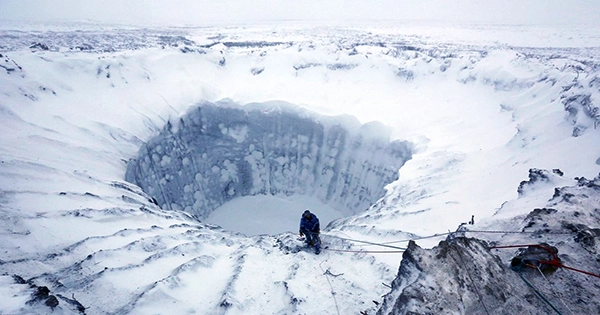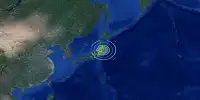Deep craters have appeared off the Canadian coast, according to submarine studies of the seafloor beneath the Arctic Ocean. Gases emitted when permafrost melts, according to the experts involved. So far, the causes have been traced back to far before humans began tampering with the planet’s thermostat, but that may be about to change. Soil has remained frozen solid over enormous regions of the earth for millions of years, both on land and under the sea, even where snow melts at the surface and no permanent ice sheet forms. This frozen layer, known as permafrost, stores billions of tons of carbon dioxide and methane.
The Palaeocene-Eocene Thermal Maximum, when temperatures soared dramatically over a few thousand years, is likely to have been triggered by the abrupt melting of comparable regions some 55 million years ago. Permafrost is melting anew, as evidenced by plumes of bubbles rising to the surface in shallow waters, the collapse of Arctic highways, wrecked scientific equipment, and the abrupt appearance of large craters in Siberia. For the first time, scientists have disclosed what all of this is doing to a section of the Arctic Ocean’s bottom in Proceedings of the National Academy of Sciences.
Between 2010 and 2019, Dr. Charles Paull of the Monterey Bay Aquarium Research Institute and co-authors used autonomous underwater vehicles and icebreakers at the surface to conduct four surveys of the famous Beaufort Sea. They limited their observations to depths of 120 to 150 meters (400-500 feet) since this encompasses the permafrost’s outer boundary in most instances. The research describes a number of steep-sided depressions up to 28 meters (92 feet) broad, as well as pingos, which are ice-filled hills up to 100 meters (330 feet) large. Some, such as a deep depression measuring 225 meters (738 feet) long and 95 meters (312 feet) wide, emerged between surveys rather than being long-standing features. Others grew throughout the period that the team was monitoring.
Groundwater is rising up the continental slope, causing the depressions. When groundwater freezes due to contact with colder material, the ground surface heaves higher, resulting in pingos. “We know enormous changes are occurring across the Arctic region, but this is the first time we’ve been able to deploy equipment to monitor changes offshore as well,” Paull said in a statement. “This ground-breaking research has shown how to identify and monitor the melting of undersea permafrost after baselines have been established.”
The study was feasible because the Beaufort Sea, which was long too ice-bound for such research, is rapidly thawing. The authors concur that this trend is a result of human-caused greenhouse gas emissions. The retreat of permafrost on land is also extensive. The extra heat such gasses add to the global system, on the other hand, has yet to reach the depths Paull and co-authors were investigating. Temperatures operate on a considerably slower cycle here, aided by the presence of so much water, and are still reacting to the warming that occurred when the last glacial epoch ended. At the current rate, the topography observed by the study would take over a thousand years to create.
“There isn’t a lot of long-term data on the temperature of the seabed in this region,” Paull said, “but the data we do have don’t reveal a rising trend.” “Rather than being driven by heat carried in slowly flowing groundwater systems, changes in seabed landscape are driven by heat carried in slowly moving groundwater systems.” Part of a reinforcing interglacial age cycle, the natural melting of Ice Age permafrost releases gasses that warm the globe, although the effect is gradual enough to pose minimal threat to people or other animals. Things might accelerate quickly if human-induced air heat enters the waters at these levels, and the authors view their study as setting a baseline so we can know if that happens.















